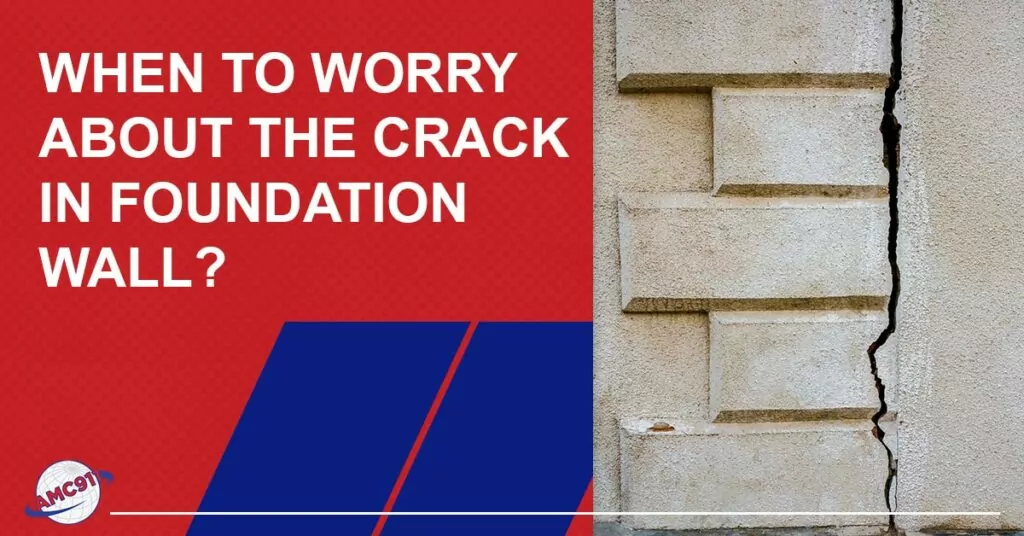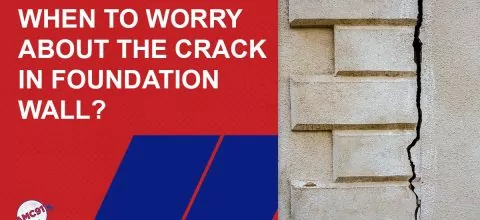Are you worried about a crack in your foundation wall? If so, don’t hit that back button because that’s what this article is about. We’re going to review foundation wall cracks, what causes them, when you should worry about a crack in a foundation wall, how they’re fixed, and what you can do to help prevent them.
Is a Crack in a Foundation Wall Normal?
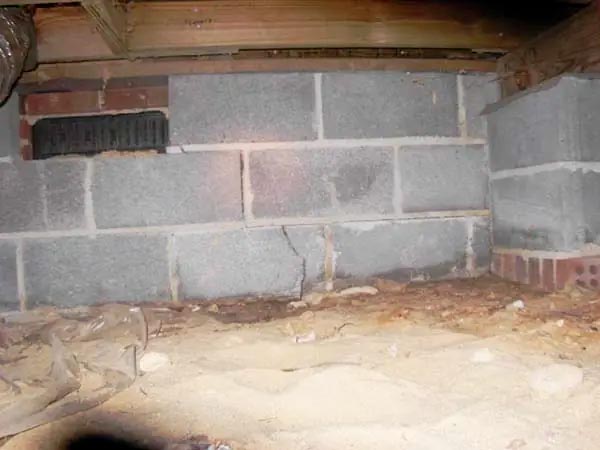
If “normal” means something you don’t need to worry about, then no, a crack in a foundation wall is not normal. You should be concerned about a crack in a foundation wall. However, that doesn’t mean you should necessarily lose sleep over it. Even if it’s a serious crack, it can probably be repaired.
What Causes Cracks in a Foundation Wall?
Most cracks in a foundation wall are caused by one of two things:
- Shrinkage during the concrete curing process. (This is for poured concrete foundation walls.)
- Hydrostatic pressure
Here’s a bit more about each:
Foundation wall cracks caused by shrinkage
Shrinkage cracks are pretty common in poured concrete foundation walls. They’re usually vertical and hairline. While shrinkage cracks aren’t structurally significant, they can allow water to enter a basement or crawl space. Therefore, it’s best to seal them with epoxy.
Foundation wall cracks caused by hydrostatic pressure
The other leading cause of a crack in a foundation wall is hydrostatic pressure. Hydrostatic pressure builds up when excess moisture in the ground around the foundation can’t drain off. Hydrostatic pressure pushes against the foundation and can cause the foundation wall to bow inward and even crack horizontally if it isn’t relieved. Foundation cracks caused by hydrostatic pressure require immediate attention by a foundation repair professional.
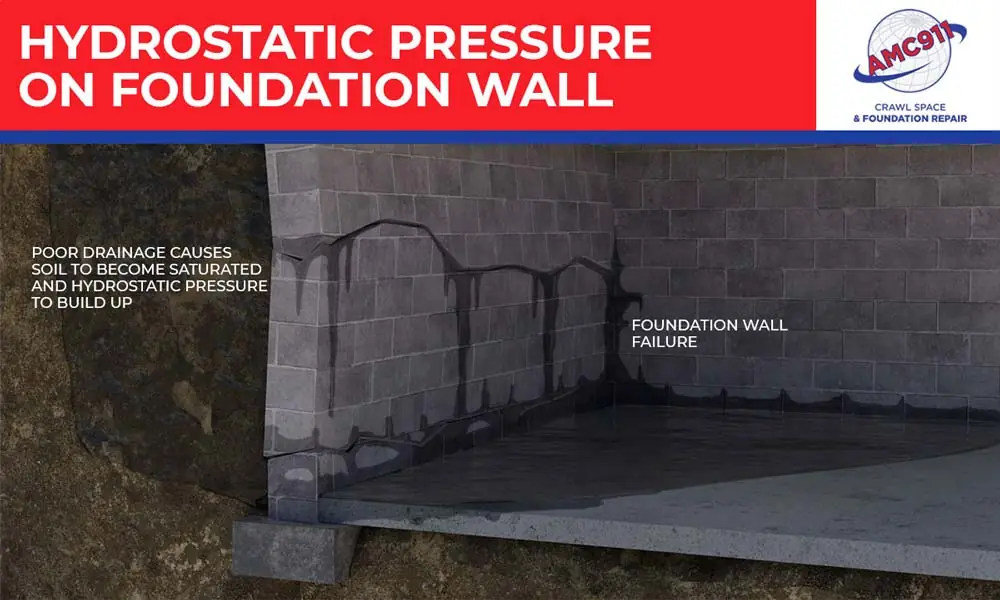
Repair Solutions for Foundation Wall Cracks
The chosen repair solution for a crack in a foundation wall will depend on the crack’s cause. A crack caused by shrinkage during the concrete curing process will not be repaired like a crack caused by hydrostatic pressure.
Repair solutions for shrinkage cracks in a foundation wall
If a crack in a poured concrete foundation wall was caused by shrinkage during the concrete curing process, the solution will be to seal it with epoxy.
Repair solutions for foundation cracks caused by hydrostatic pressure
If a foundation wall crack was caused by hydrostatic pressure, the solution might be carbon fiber straps. Carbon fiber is an extremely strong material that can stabilize a foundation wall that’s bowing inward and cracked. Once the repair is complete, the straps can be painted so they’re barely visible. After the wall is stabilized, the root cause of the crack (i.e., the hydrostatic pressure) can be addressed. For more information, see Foundation Crack Repair.
When to Be Concerned About a Crack in a Foundation Wall
Generally, vertical hairline cracks in a poured concrete foundation wall aren’t anything to worry about. They’re very common and don’t affect the building’s structural integrity. We recommend sealing them with epoxy so water can’t infiltrate your basement or crawl space.
It’s the horizontal foundation wall cracks you need to be concerned about. These are caused by hydrostatic pressure, and their presence indicates your home already has structural damage. No need to panic, though. Your foundation wall probably isn’t going to collapse. However, you do need to take these cracks seriously. Contact a foundation repair contractor right away and ask for an evaluation. If you ignore the crack, it will get worse, and you’ll pay more for the repair.
Other cracks to be concerned about include the following:
- Cracks that are growing in size over time – While a small crack may not seem like a big deal initially, if it continues to spread and expand, it’s a sign of structural damage.
- Stair step and large diagonal cracks – This is a telltale sign of foundation movement.
- Cracks wider than 1/10 inch – Cracks wider than 1/10 inch may be cause for concern, particularly if they are wider at one end than the other.
- Cracks extending across the ceiling and down a wall – These types of cracks result from significant structural damage and should be addressed immediately.
Other Signs Your Home Might Have a Foundation Problem
Signs your home might have a foundation issue include the following:
- Uneven floors – This can manifest in various ways, such as sloping or sagging floors or floors that feel unstable or bouncy underfoot.
- Doors and windows that don’t open and close correctly – If a door suddenly becomes difficult to latch or a window won’t budge, it could be a result of foundation movement.
- Chimneys and porches pulling away from the house – The separation might be barely noticeable initially.
- Walls that are no longer in contact with the ceiling or floor – This can also be a sign of foundation problems.

If you see any of the above – or anything else that strikes you as suspicious – contact a foundation repair contractor right away and ask for an evaluation. Don’t delay. If you wait, the problem will worsen, and you’ll pay more for the repair.
Tips on How to Prevent Foundation Problems
The good news is there are things you can do to help prevent foundation trouble. Since most foundation problems are caused by water, most of these preventative measures involve controlling groundwater around the foundation:
- Regrade the yard around your home – This involves reshaping the yard to ensure the ground slopes away from the foundation. This way, groundwater can be effectively diverted away from the foundation.
- Install downspout extensions – This will ensure water is directed further away from the foundation and does not pool up around the base of the house. This can significantly reduce the risk of water seeping into the foundation and causing damage.
- Clean gutters regularly – Clogged gutters can become a breeding ground for insects and pests and cause water to overflow and soak the soil around the foundation. Periodically cleaning gutters of debris is vital to ensure water flows smoothly through the gutter system and drains away from the foundation.
- Install a drain tile system – A drain tile system involves creating a drainage system around the foundation at the footing level to help direct groundwater away from the home.
- Keep trees away from the foundation – Tree roots can invade the ground under the foundation and cause a lot of damage. Ideally, trees with invasive root systems should be planted at least 20 feet from the foundation to minimize this risk.
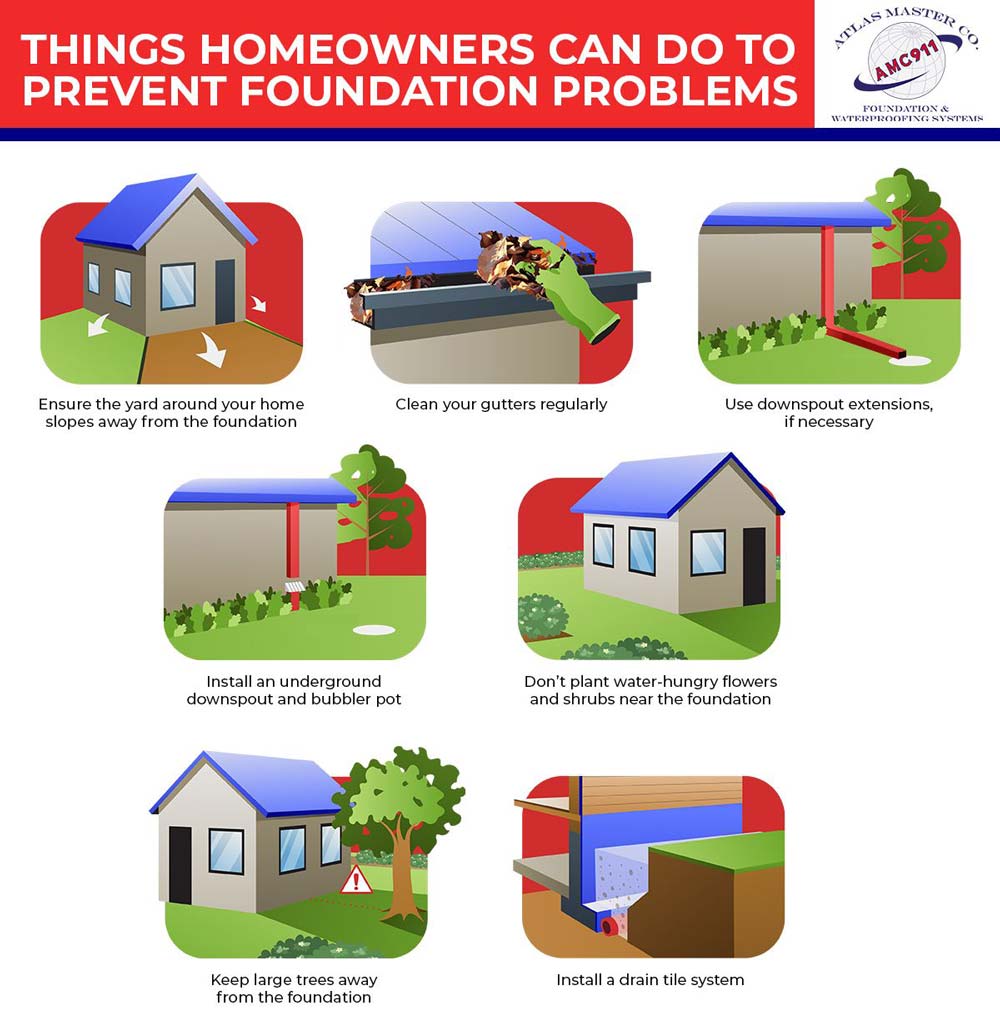
If you’re concerned about a crack in your foundation wall, contact AMC911 today to schedule a foundation evaluation. If we find a problem, we’ll give you a repair estimate.

